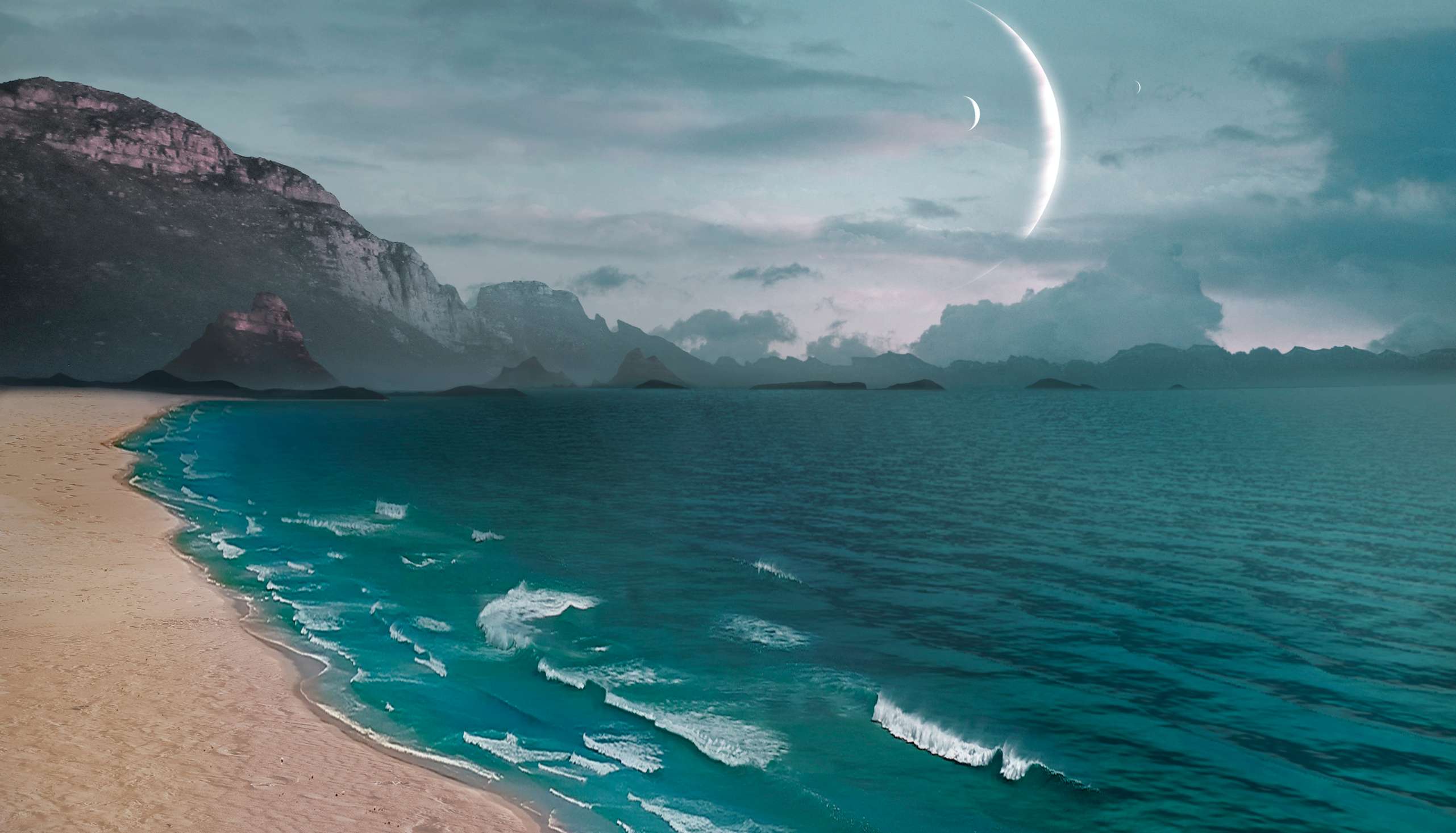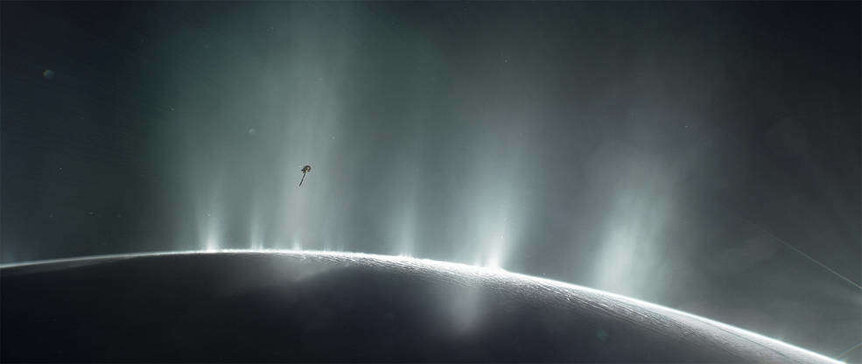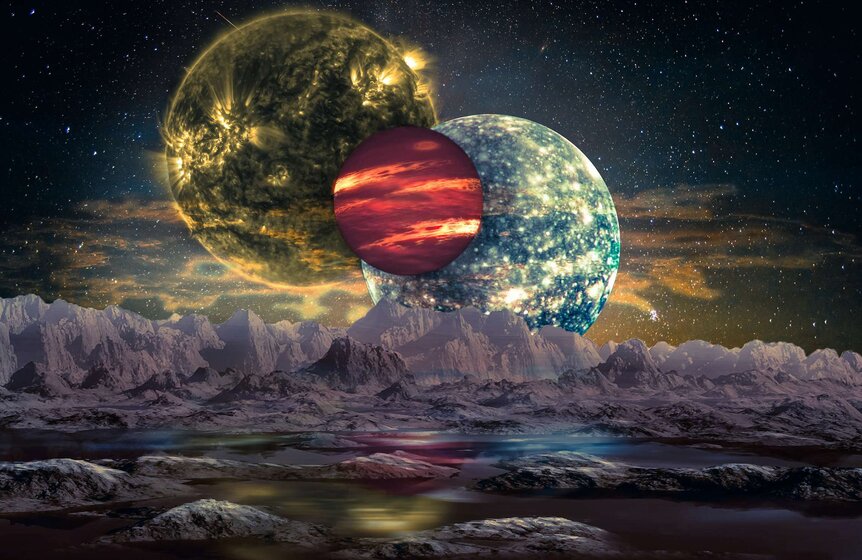Create a free profile to get unlimited access to exclusive videos, sweepstakes, and more!
NASA believes a multitude of oceanic exoplanets might be the Milky Way norm

Adding a splash of new insight into our diverse universe, scientists are continuing to find more evidence that our cosmos may contain a deluge of planetary water worlds far greater than previously speculated.
For the past decade, astronomers have theorized that an abundance of watery extraterrestrial exoplanets outside our Solar System certainly should exist. Out of the 4,000 confirmed or candidate worlds, most belong to two size classifications: those having a planetary radius averaging 1.5x that of the Earth, and those averaging approximately 2.5x the radius of the Earth.
Data evaluations first presented by a team of international scientists to the Goldschmidt Conference back in 2018 used info captured from the exoplanet-hunting Kepler Space Telescope and Gaia missions to reveal that a significant number of the known planets could be up to 50% water-rich.
“It was a huge surprise to realize that there must be so many water-worlds,” said lead researcher Dr. Li Zeng of Harvard University during the 2018 meeting. “We have looked at how mass relates to radius, and developed a model which might explain the relationship. The model indicates that those exoplanets which have a radius of around x1.5 Earth radius tend to be rocky planets (of typically x5 the mass of the Earth), while those with a radius of x2.5 Earth radius (with a mass around x10 that of the Earth) are probably water worlds.
“This is water, but not as commonly found here on Earth,” he added. "Their surface temperature is expected to be in the 200 to 500 degree Celsius range. Their surface may be shrouded in a water-vapor-dominated atmosphere, with a liquid water layer underneath. Moving deeper, one would expect to find this water transforms into high-pressure ices before we reaching the solid rocky core. The beauty of the model is that it explains just how composition relates to the known facts about these planets.”
Estimates inferred that 35% of all known exoplanets larger than Earth should be flush with water, and most likely evolved like the massive planet cores of Jupiter, Saturn, Uranus, and Neptune observed in our own Solar System. Scientists were thrilled to learn that these mysterious intermediate-size exoplanets might be wet worlds loaded with copious amounts of H2O and that future atmospheric observations could support these new findings.
Now new NASA research published on June 18 in the journal Publications of the Astronomical Society of the Pacific is expanding upon knowledge delivered at the Goldschmidt Conference two years ago. This inquisitive thrust is looking toward finding more damp worlds based on models of two of our own Solar System’s moons that have no atmospheres and are blanketed in ice, Saturn’s moon Enceladus and Jupiter’s moon Europa, which astronomers list as ocean worlds.
“Plumes of water erupt from Europa and Enceladus, so we can tell that these bodies have subsurface oceans beneath their ice shells, and they have energy that drives the plumes, which are two requirements for life as we know it,” explained lead study author and NASA planetary scientist Lynnae Quick. “So if we’re thinking about these places as being possibly habitable, maybe bigger versions of them in other planetary systems are habitable too.”
NASA’s hunt for life outside our own planetary neighborhood has been predominantly focused on Habitable Zone planets which could contain liquid water. However, scientists are quick to remind us that some extrasolar oceans will be more welcoming places to settle down in than others.
Number crunching using a mathematical breakdown of several dozen exoplanets, including worlds in the TRAPPIST-1 system, Quick and her team revealed that over 25% of the exoplanets they studied might be oceany destinations, with a multitude hypothetically protecting alien seas under layers of surface ice like Europa and Enceladus.
Researchers picked out 53 different exoplanets with sizes comparing to Earth's, yet with up to eight times more mass. Planets in this range are distinguished by being more solid than gaseous, so much more likely to nurture liquid water on or below their surfaces. Since 2017, when Quick and company started their study, over 30 more planets that fit these conditions have been located, showing that remote water worlds could be quite common.
“Forthcoming missions will give us a chance to see whether ocean moons in our solar system could support life,” adds Quick, a science team member on the Clipper mission to Jupiter's moon Europa and Dragonfly mission to Saturn’s moon Titan. “If we find chemical signatures of life, we can try to look for similar signs at interstellar distances.”
Radiogenic heat, caused by the slow decay of radioactive materials in a planet’s mantle and crust, and tidal forces were also called into consideration. Quick’s crew also paid attention to each exoplanet’s density and the theorized amount of internal heating it churns up compared to Earth. The method by which heat is discharged via volcanism through these liquid environments is also vital, as it's a major indicator as to how habitable this exotic world might be.
“If we see that a planet’s density is lower than Earth’s, that’s an indication that there might be more water there and not as much rock and iron,” Quick says. "And if the planet’s temperature allows for liquid water, you’ve got an ocean world. But if a planet’s surface temperature is less than 32 degrees Fahrenheit, where water is frozen, then we have an icy ocean world, and the densities for those planets are even lower.”


















